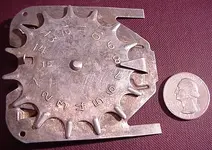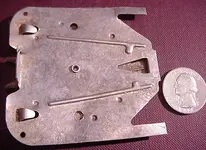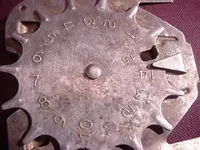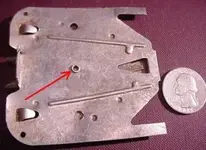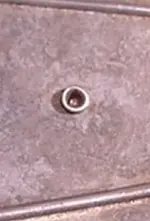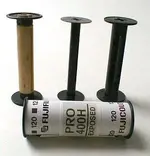Guys, I wasn't the first one to recognize it, but I'll say it again:
It's the temperature adjustment dial from an old refrigerator. I couldn't find a pic or old manual on the internet to prove it so someone will have to show it to an older refrigerator repairman or email it to one of those websites that sells antique appliances. I was fascinated by it and played with it many times when I was a kid and recognized it instantly even though the cover is missing and it is out of context. I helped defrost the refrigerator. There is no question about what it is, the only thing lacking is proof.
The only thing I can say to try to convince anyone without visual proof is that it obviously is too light to perform a mechanical task such as a gear would, and the attachments are not sturdy enough. In fact, it obviously is not designed for any kind of frequent or heavy usage, especially considering its age and how much better things were made then.
A counter makes no sense because it is manually operated like a telephone dial, click counters have been around longer than this piece and why would you need a counter to go to only fifteen? Telephone ringer volume adjustment wheels are much smaller (though I think that is the best guess out of the ones I have seen here), camera parts are smaller and much more heavy duty, and to count days (such as for gestation) you use a calendar, not a dial, unless there are multiple dials to mark the date, like in a date ink stamper. You can see by the font style of the numbers that it was originally designed from say 1910 to 1960, probably the 1920s to maybe 1940s. Finally, the aluminum is the same weight and finish of other parts of refrigerators from the period.



